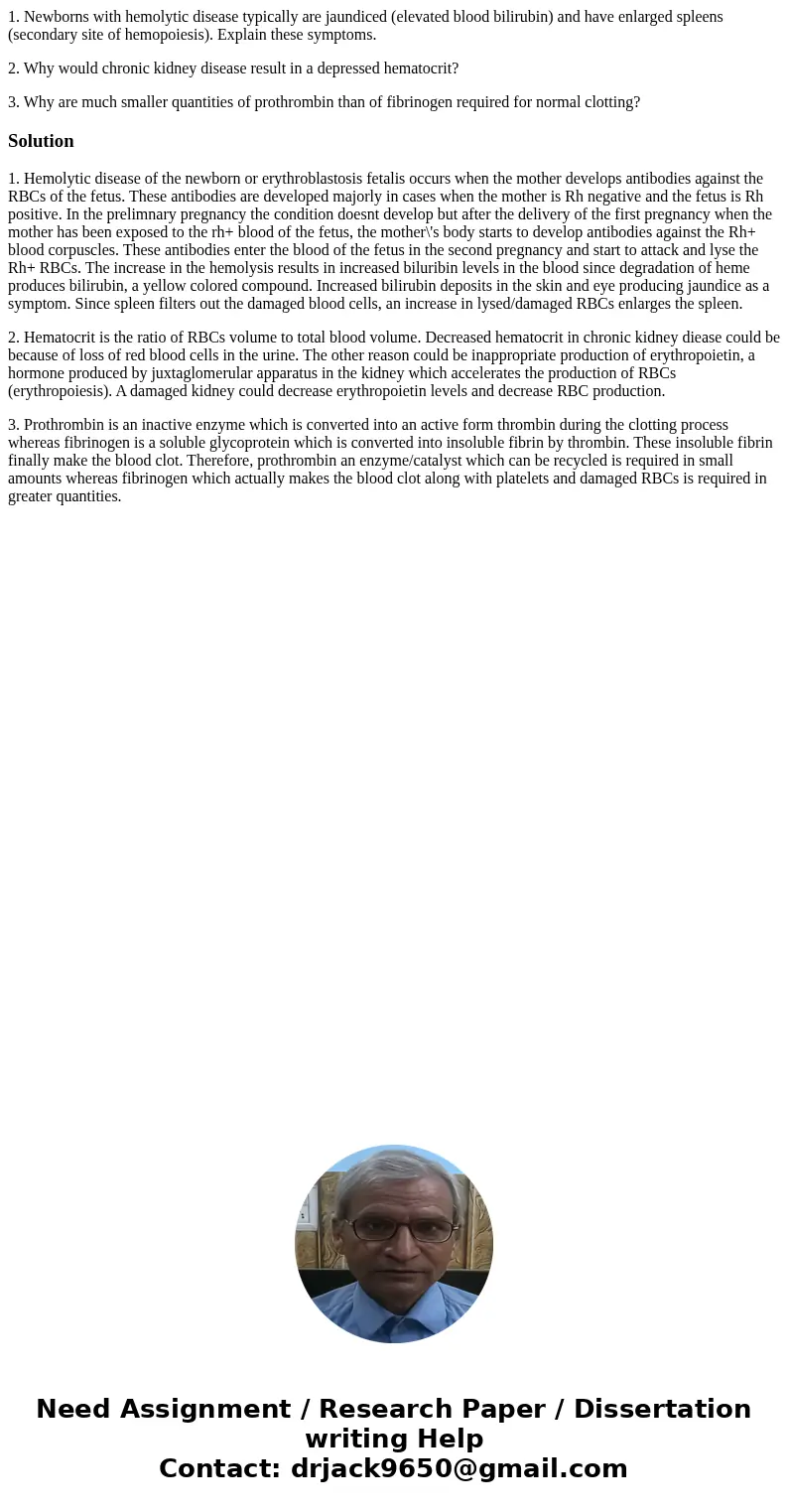1 Newborns with hemolytic disease typically are jaundiced el
1. Newborns with hemolytic disease typically are jaundiced (elevated blood bilirubin) and have enlarged spleens (secondary site of hemopoiesis). Explain these symptoms.
2. Why would chronic kidney disease result in a depressed hematocrit?
3. Why are much smaller quantities of prothrombin than of fibrinogen required for normal clotting?
Solution
1. Hemolytic disease of the newborn or erythroblastosis fetalis occurs when the mother develops antibodies against the RBCs of the fetus. These antibodies are developed majorly in cases when the mother is Rh negative and the fetus is Rh positive. In the prelimnary pregnancy the condition doesnt develop but after the delivery of the first pregnancy when the mother has been exposed to the rh+ blood of the fetus, the mother\'s body starts to develop antibodies against the Rh+ blood corpuscles. These antibodies enter the blood of the fetus in the second pregnancy and start to attack and lyse the Rh+ RBCs. The increase in the hemolysis results in increased biluribin levels in the blood since degradation of heme produces bilirubin, a yellow colored compound. Increased bilirubin deposits in the skin and eye producing jaundice as a symptom. Since spleen filters out the damaged blood cells, an increase in lysed/damaged RBCs enlarges the spleen.
2. Hematocrit is the ratio of RBCs volume to total blood volume. Decreased hematocrit in chronic kidney diease could be because of loss of red blood cells in the urine. The other reason could be inappropriate production of erythropoietin, a hormone produced by juxtaglomerular apparatus in the kidney which accelerates the production of RBCs (erythropoiesis). A damaged kidney could decrease erythropoietin levels and decrease RBC production.
3. Prothrombin is an inactive enzyme which is converted into an active form thrombin during the clotting process whereas fibrinogen is a soluble glycoprotein which is converted into insoluble fibrin by thrombin. These insoluble fibrin finally make the blood clot. Therefore, prothrombin an enzyme/catalyst which can be recycled is required in small amounts whereas fibrinogen which actually makes the blood clot along with platelets and damaged RBCs is required in greater quantities.

 Homework Sourse
Homework Sourse